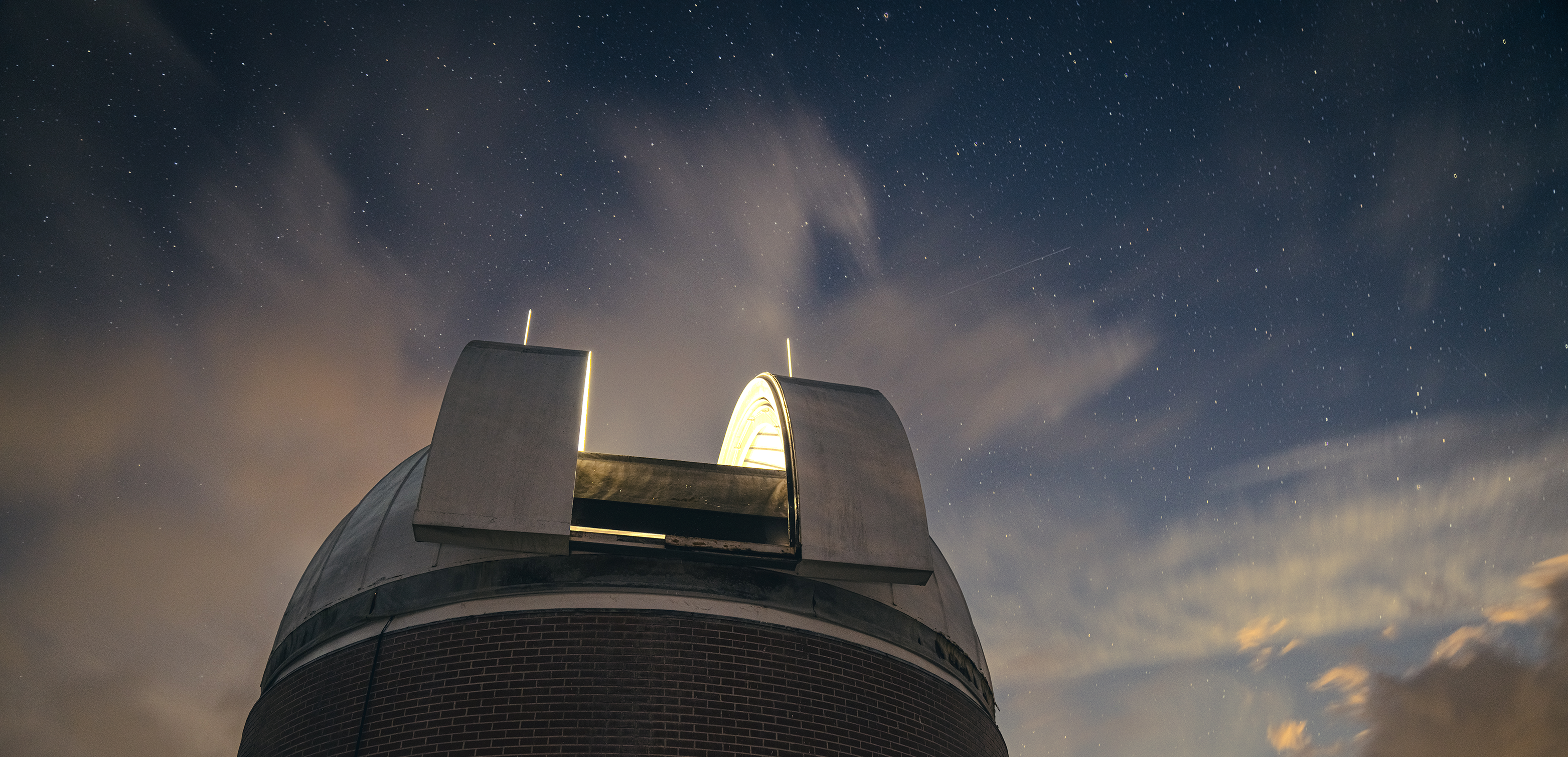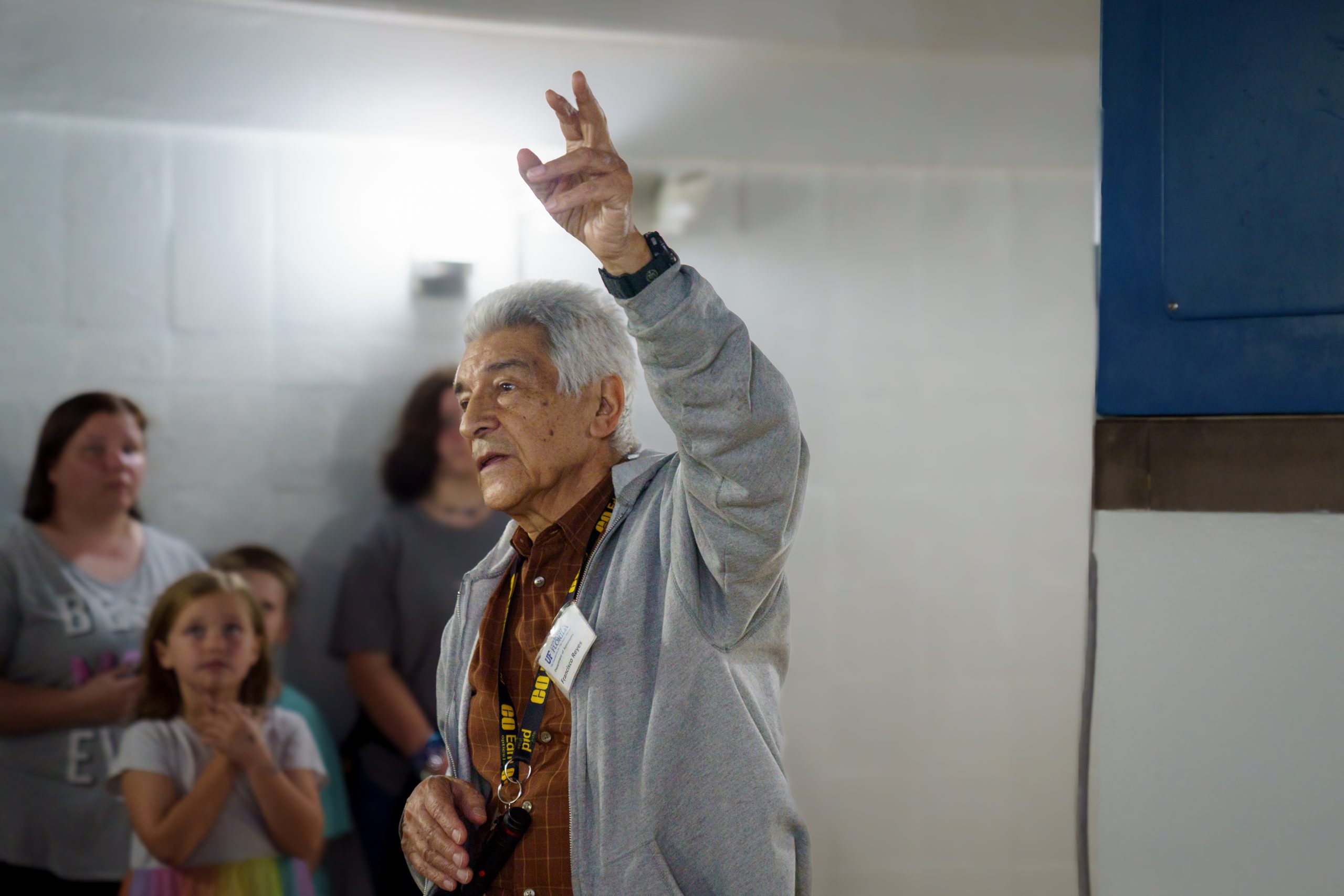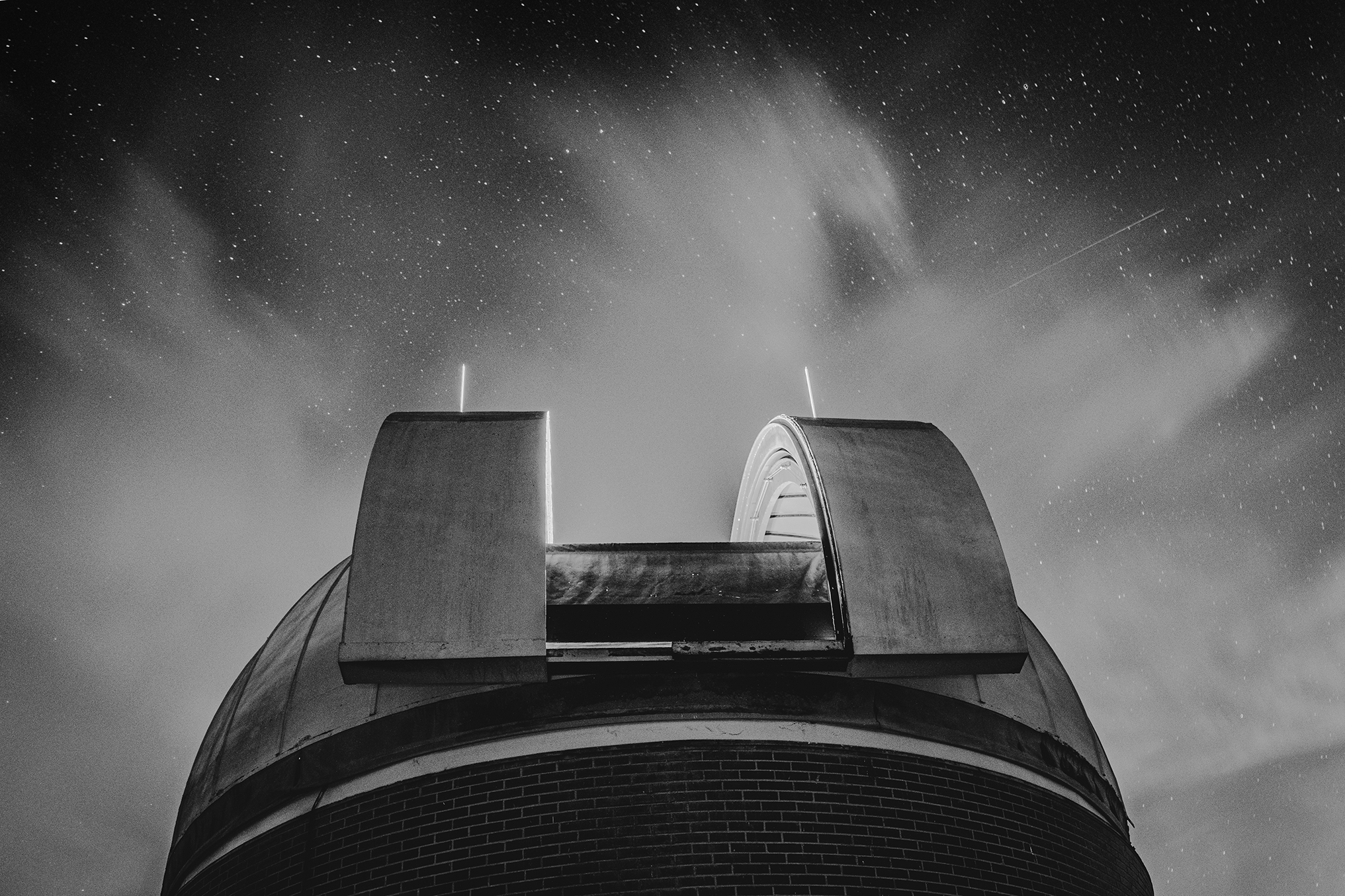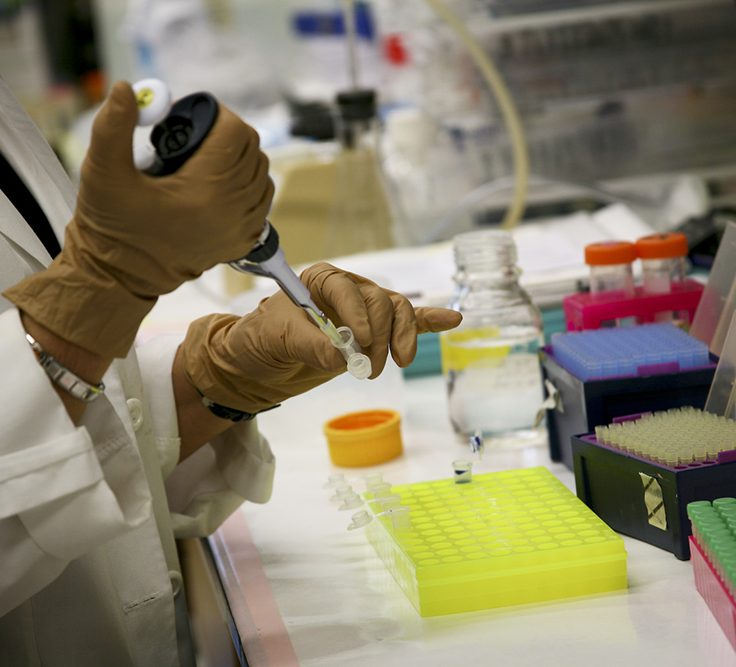
UF’s Rosemary Hill Observatory offers a rare view of the night sky
Far away from the light pollution of big cities, Rosemary Hill is the perfect place to stargaze for residents of North Central Florida.
Located in the heart of the largest dark area of North Florida, the Rosemary Hill Observatory stands quietly in a forest near the small town of Bronson. Tucked away from the bright lights of Gainesville, this UF satellite facility offers students and astronomy enthusiasts alike a rare view of the night sky, unsullied by the effects of light pollution.
Compared to some of the massive observatories designed to peer into deep space, the facilities at Rosemary Hill may seem unassuming at first. There are only three buildings there: two small, domed towers housing telescopes and a small lodge near the main road. These modest structures, however, boast some impressive technology.
While the advanced equipment is primarily used by UF astronomy students for academic purposes, the observatory also serves the greater Gainesville and Bronson communities at large. The Department of Astronomy regularly collaborates with local clubs and astronomy enthusiasts to host stargazing events and meteor shower watch parties on the grounds. The Department has started hosting its own events, too, offering visitors from Bronson, Gainesville, and other nearby towns tours of the towers and talks on astronomical topics like light pollution.
“It is a rare gem in the heart of North Florida,” Elizabeth Lada, chair of the Department of Astronomy, explained. “As one of the few observatories in the eastern US with minimal light pollution, it not only serves a vital learning ground for students, providing hands-on experience and training, but also invites the broader community to connect with the wonders of the cosmos.”
The larger of the two observatory towers stands atop the hill and houses the older and larger of the two telescopes. This 30-inch-wide Tinsley telescope was installed way back in 1967, the same year the observatory was built, and has received regular repairs and upgrades over its nearly 60-year lifespan.
Francisco Reyes, an associate scientist emeritus for the Department of Astronomy, oversees operations at Rosemary Hill. According to Reyes, operating the larger telescope is a team effort, as despite being upgraded over the years, the large telescope still must be manually moved, framed, and focused.

“Students work in teams of three to four to operate it,” Reyes explained. “We usually let graduate students lead the teams to give them a chance to share their expertise.”
Operating a large, manual telescope takes a lot of time and trial and error, but for students, the experience is invaluable. In order to get a photo, they must identify the object they wish to photograph, rotate the telescope to point in that direction, focus the lens on the object, and get the lighting and focus just right.
“It can take up to an hour and a half to get just one great photo,” Reyes said.

If students are patient, though, the photos they take at Rosemary Hill are stunning. Visitors to Rosemary Hill can find a small gallery of photos from over the years in the larger tower’s lobby. Some of these photos even date back to the 1970’s and 80’s, showcasing the observatory’s rich history.
The second observatory tower is a short walk down the hill, and houses a smaller 14-inch wide Meade telescope within. This telescope, unlike the Tinsley, is brand new, having been installed in 2021 thanks to a Tech grant championed by Astronomy Professor Anthony Gonzalez. Also, unlike the larger telescope, this is a digital telescope and can be turned and focused using a controller. It can even be used remotely, even allowing remote operation from UF’s campus. However, the complexity of its internal components makes regular maintenance and upgrades on the Meade telescope challenging, especially in the humid Florida climate, where mold growth poses a threat.

Despite these operational challenges, Lada expresses optimism about the strong turnout at recent public events and hopes to continue fostering a connection between the observatory and the communities it serves.
“I hope that we can continue to share the magic of stargazing under these dark skies with our students and the community for many generations to come,” said Lada.
For more information on the Astronomy Department’s public events, visit their website here:


